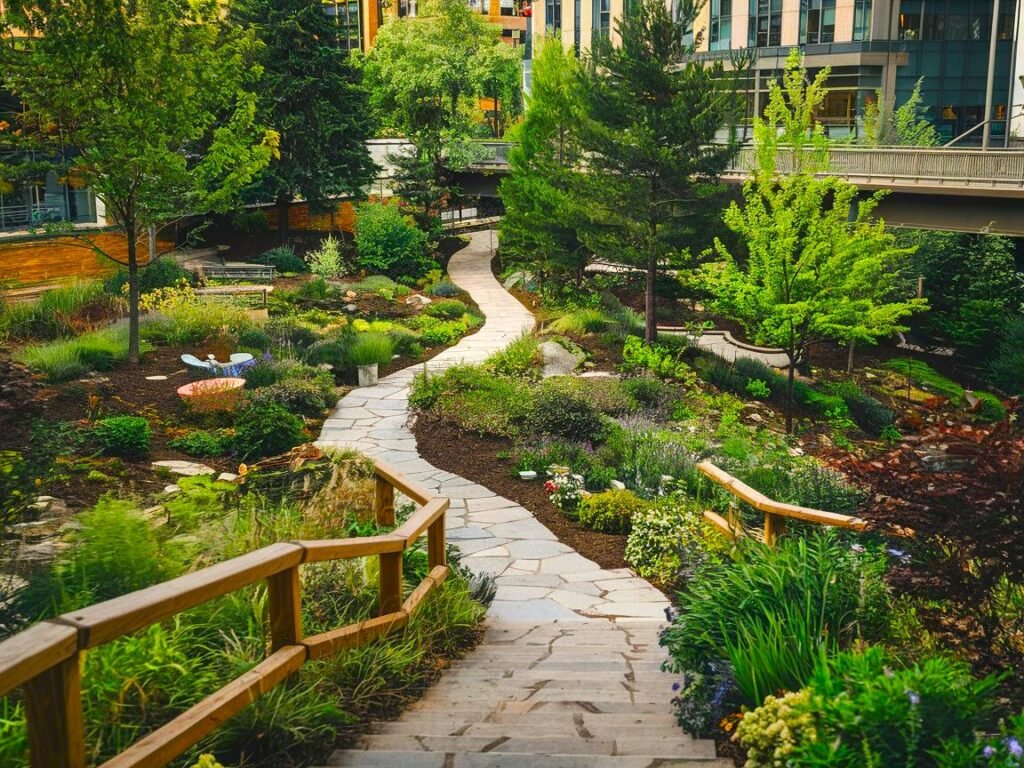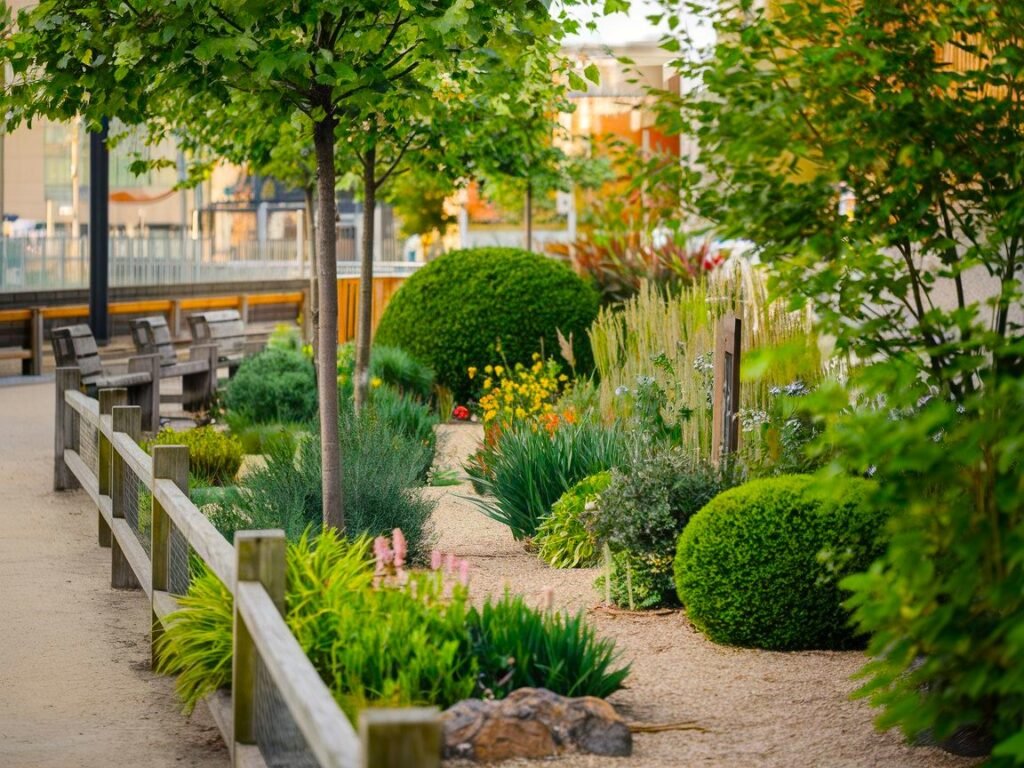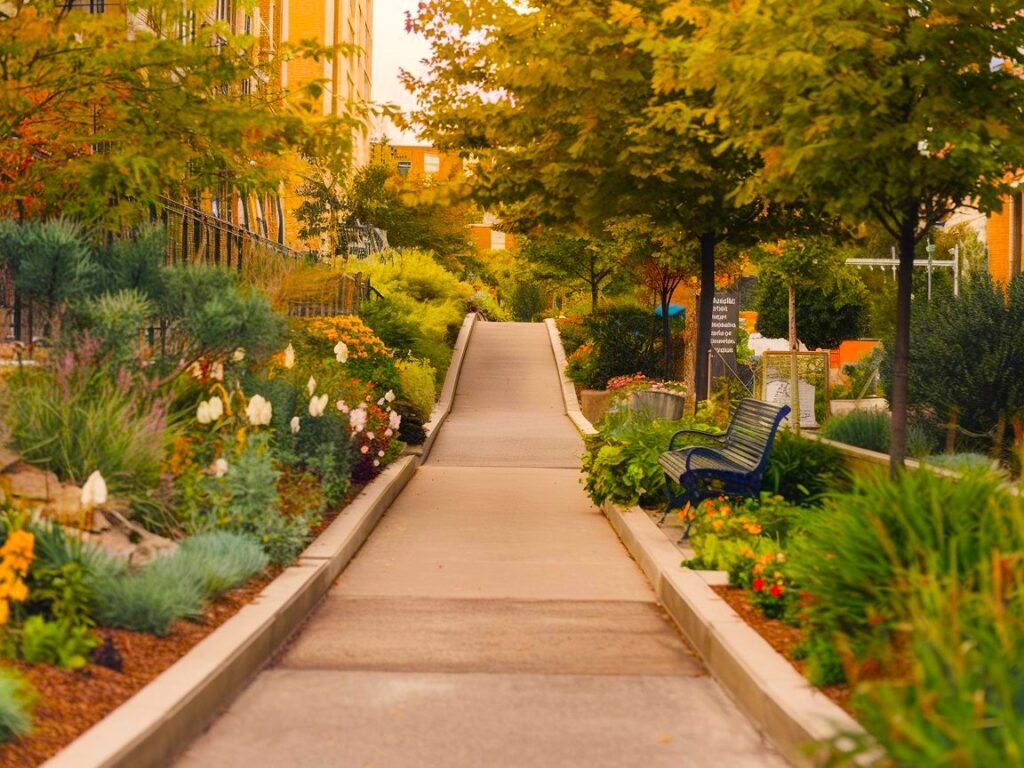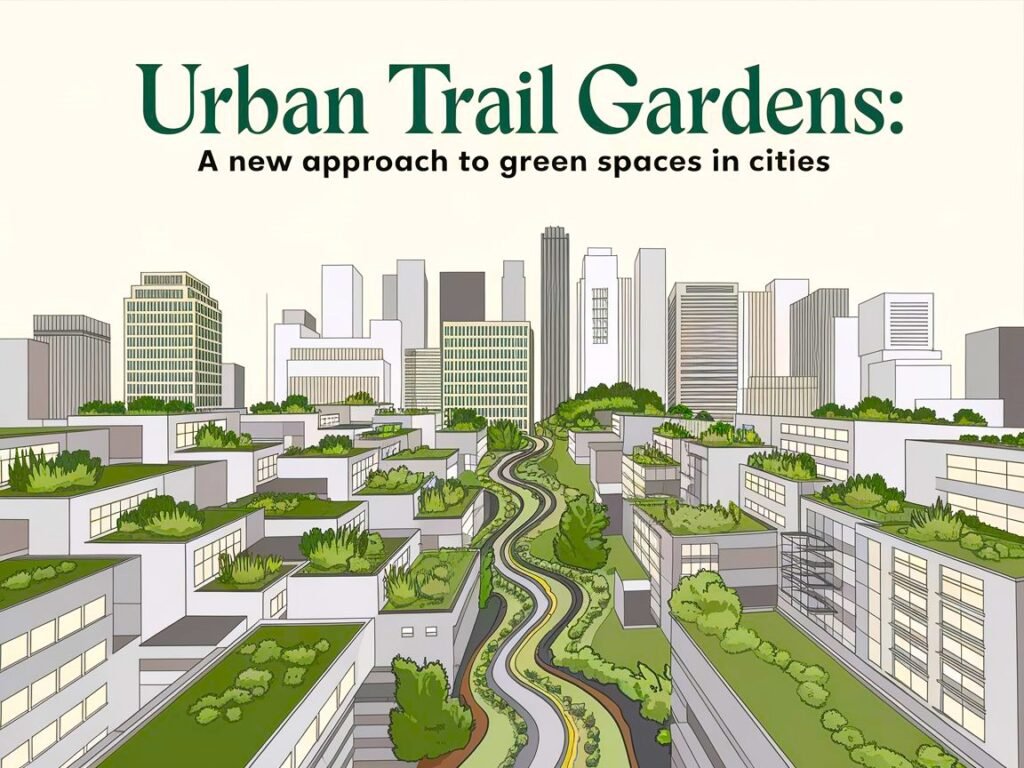While the expansion of concrete jungles has been going up with urbanization at full pace, our cities hardly leave room for greenery. The reason nature in such a setting was never required but in this case, felt with fresh vitality is now trying to put on some innovative approach to urban trail gardens. These are significant in making city trails attractive and offer several environmental benefits, which can provide opportunities for community engagement. This paper will discuss urban trail gardens, their benefits, and how to create one within your community.
What are Urban Trail Gardens?
Trail gardens in urban areas are conceptualized and designed green spaces along pedestrian or biking trails within cities. They combine the functionality of trails with the aesthetic and environmental benefits associated with gardens. These typically include native plants, flowers, shrubs, and edible plants, serving as an oasis amidst an urban sprawl.
These trail gardens are found in the cities’ parks, unused urban spaces, and city walkways. They have multiple purposes: improve air quality, provide habitat to pollinators, and increase urban attractiveness.

Advantages of Urban Trail Gardens
Urban trail gardens have various benefits both for the individual, the community, and the environment. Here are the very reasons why these can be very much part of the city landscape:
1. Better Mental and Physical Health
- It was previously researched that greenery lowers feelings of stress, worry, and sadness.
- Trail gardens increase exercise like brisk walking, running, and cycling.
- They allow space for mindfulness, which gives the city dweller a chance to have a few quiet moments with the natural world.
2. Environmental Benefits
- Air Purification: The plants in trail gardens absorb carbon dioxide and release oxygen, thereby maintaining good air quality.
- Cooling Effect: Green spaces reduce the impact of the urban heat island effect by providing shade and lowering temperatures as well.
- Stormwater Management: Native plants absorb rainwater and prevent rapid runoff and flooding.
3. Habitat for Pollinators
Trail gardens are often designed with plants that attract bees, butterflies, and birds, which are all important pollinators. This supports the health of ecosystems and local agriculture.
4. Community Engagement
- Trail gardens provide community gathering spaces where neighbors can connect.
- Often, community members participate in designing, planting, and maintaining these spaces, which builds a sense of ownership and pride.
- They can hold education sessions and workshops for city people about sustainability and gardening.
5. More Vibrant Urban Ambiance
As these drab gray areas become a lush vibrant trail, the entire appeal of a city increases with trail gardens in an urban environment. Neighborhoods appear to be more beautiful, and may even attract better property value.
Key Features of a Trail Garden in an Urban Setting
To create a successful urban trail garden, it’s important to include certain key elements:
1. Native Plants
Native plantings are often very less demanding in the local environment. They usually attract native pollinators because they have adapted to the local weather; hence, creating a thriving healthy ecosystem.
2. Pedestrian Quality
An accessible urban trail garden should put walkability at the top of the list first. Clear lanes, benches, and lighting are supposed to ensure everybody has access regardless of age and impairment.
3. Environmental Attributes
Include rainwater harvesting systems, composting areas, and solar-powered lighting in the trail gardens.
4. Community-Friendly Design
Encourage the local people to assist in planning and planting. Their suggestions and contributions should be considered so that the garden reflects the needs and preferences of the community.
5. Edible Plants
Vegetables, fruits, and herbs added to the trail garden can feed the community while encouraging them to use resources sustainably.

How to Get Started with Your City’s Trail gardens
You are inspired to develop a trail garden in your community. Here’s your step-by-step guide on how to get started:
1. Find a Location
Look for underutilized spaces within proximity of trails, sidewalks, or pathways through parks. Public areas owned by the city are ideal, but you’ll need permission from local authorities before starting your project.
2. Plan Your Garden Design
Work with landscape architects or urban planners to design the garden. Consider factors such as:
- Available sunlight and water access.
- Pathways, benches, and sign placement.
- Plant species selection is based on the local climatic and soil conditions.
3. Community Involvement
The group should organize a community meeting to gather ideas from the community as well as its volunteer members. In this way, the garden can be designed specifically for the use of the local community with a sense of ownership.
4. Funding Source
Trail gardens in urban areas can be financed through:
- Grants from environmental agencies or government departments.
- Local businesses’ donations or crowdfunding.
- Local schools or nonprofit partnerships.
5. Plant and Maintain
After designing and securing funding, start planting! Regular maintenance should be carried out; organizing a group of volunteers could be of much help in weeding, watering, and pruning.
Urban Trail Gardens Around the Globe
Cities worldwide are creating innovative urban trail gardens and designs. Some impressive examples include:
1. The High Line, a structure in New York City, USA
This iconic elevated park is transformed from an abandoned railway track into a stunning garden trail where native plants are used for the beauty of the art installations to seat millions in a year.
2. Bentway (Toronto, Canada)
Developed under an elevated highway, walking trails, grassy areas as well as community-related events are highlighted in the Bentway, which further shows how low-usage land in urban developments can be remade creatively.
3. Cheonggyecheon Stream (Seoul, South Korea)
This restored stream through downtown Seoul, surrounded by the garden, walking trail, and wildlife habitat, is consequently a great exemplar of what urban trail gardens can do for human health and environmental conditions.
Learn about urban gardening basic here >>

Future of Urban Trail Gardens
With the growing density of cities, urban trail gardens will increasingly become a key element in designing sustainable and livable communities. They are environmentally friendly and also correspond to globalization objectives, which should fight climate change and address urban living issues by pursuing biodiversity. Incorporating trail gardens in the city design should be supportive of green, healthy, and socially connected communities.
Conclusion
Urban trail gardens are designed as beautiful green spaces and powerful catalysts for sustainable cities, better mental and physical health, and community connection. If you are an urban planner, a community leader, or a passionate gardener, you can join the movement toward helping these green spaces grow. Take small steps, work together with your community, and watch your city thrive one trail garden at a time.
FAQs About Urban Trail Gardens
Q1. What are the best plants for urban trail gardens?
A: Native plants, pollinator-friendly flowers, and shrubs that require low maintenance are perfect. As a bonus, one can also plant edibles; herbs or vegetables can be grown.
Q2. How do urban trail gardens help the environment?
A: It includes purifying the air, reducing heat, and excess rainwater, and making habitats for wildlife.
Q3. Can I establish an urban trail garden within my city?
A: Yes! Work with local authorities and community members to identify suitable spaces and secure funding for your project.
Q4. How much does it cost to maintain urban trail gardens?
A: Maintenance cost varies but would be minimized by using native plants, sustainable irrigation methods, and community volunteers.
Q5. What does an urban trail garden mean, as compared to a normal garden?
A: Along these trails and pathways, urban trail gardens are planned to bring together the beauty and environmental benefits with functionality.



